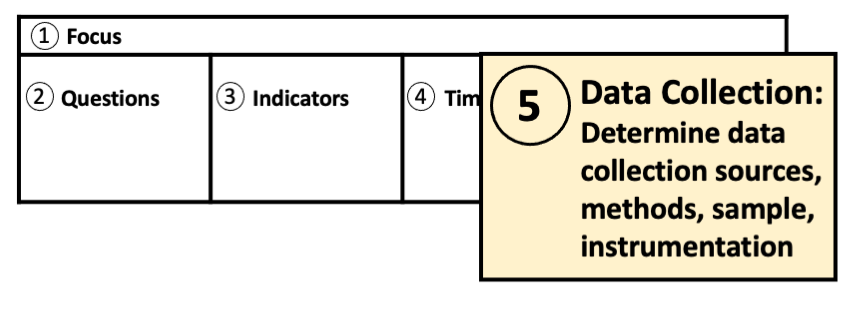Home » Enhancing Program Performance with Logic Models » Section 7: Using Logic Models in Evaluation » 7.16: Data collection
7.16: Data collection

Once we have defined our questions and identified indicators, we turn to data collection.
Sources of Information
There are many places to find the data we need, including:
- Existing information:
- Program documents
- Existing databases
- Agency records
- Research reports
- Etc.
- People:
- Participants/nonparticipants
- Key informants
- Partners
- Staff
- Policy makers
- Etc.
- Pictorial records and observations:
- Photographs
- Videotapes
- Maps
- Observation
Methods of Data Collection
There are also many ways in which to gather data. The”best” method is the method most likely to provide you with the information you need.
- Survey
- Mail (surface, electronic)
- Telephone
- On-site
- Interview
- Structured interviews
- Unstructured interviews
- Case study
- Observation
- Portfolio reviews
- Tests
- Journals
- Etc.




